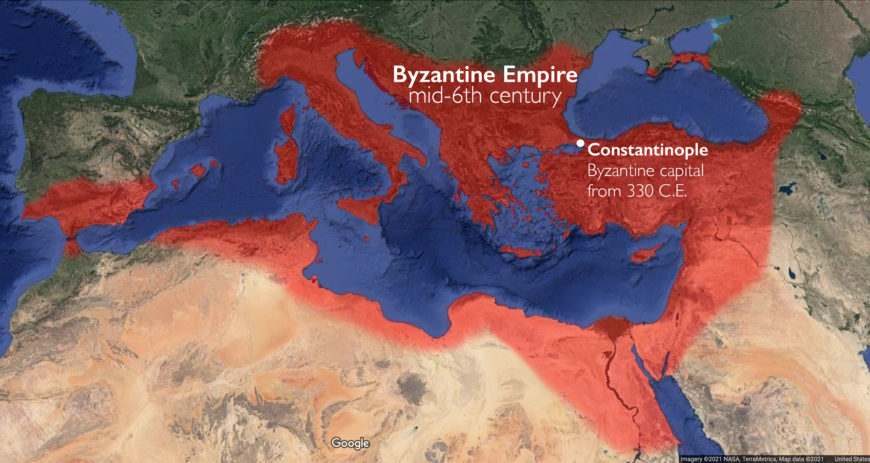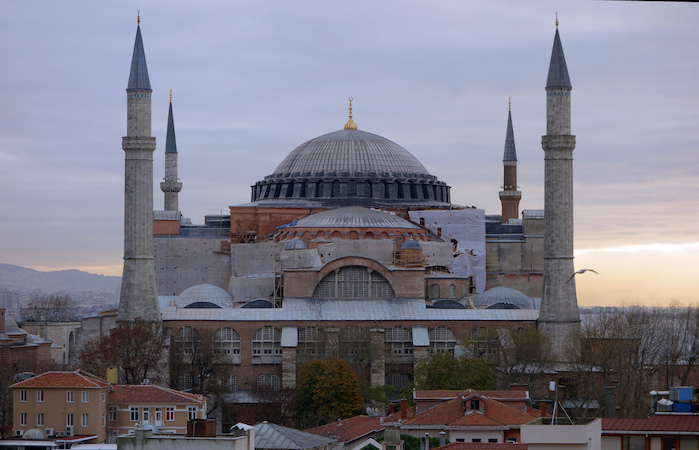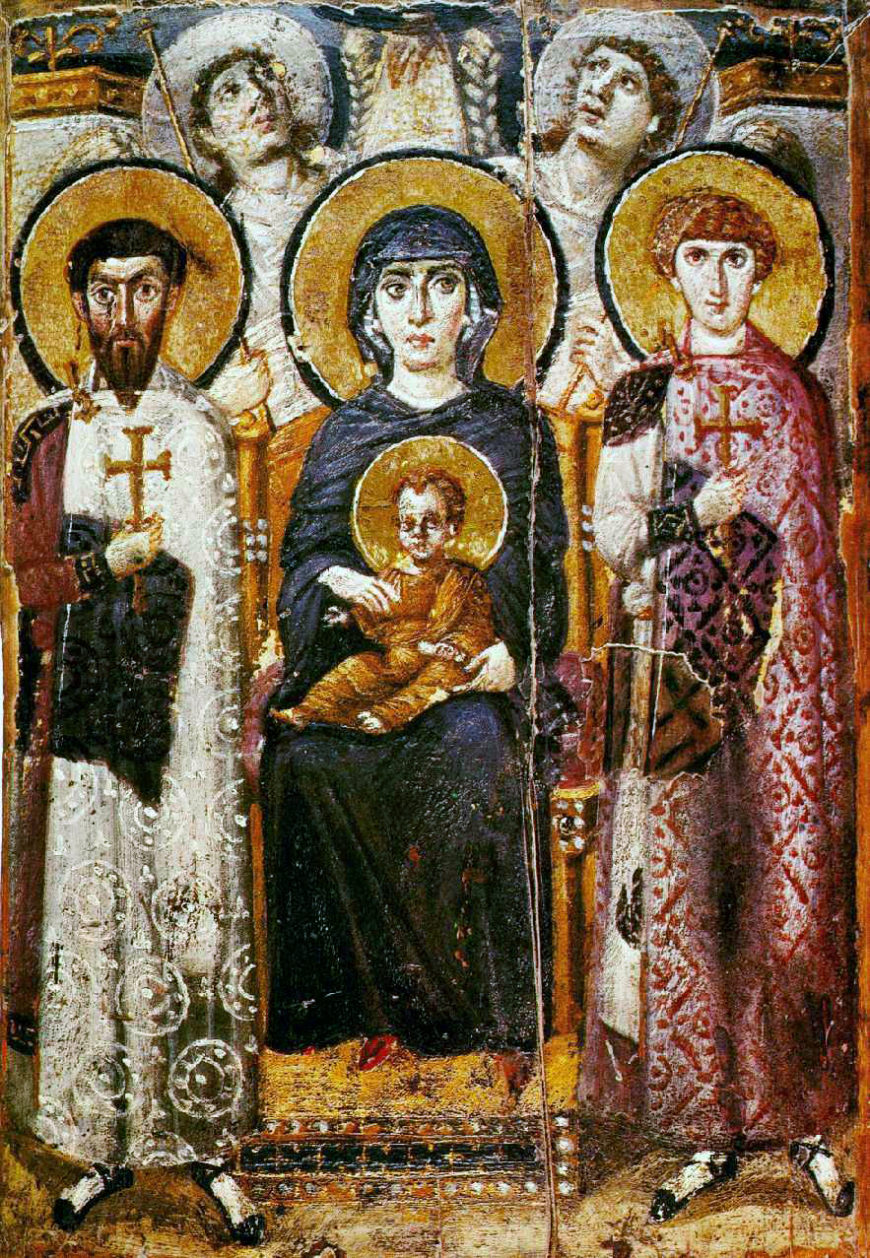To speak of “Byzantine Art” is a bit problematic, since the Byzantine empire and its art spanned more than a millennium and penetrated geographic regions far from its capital in Constantinople. Thus, Byzantine art includes work created from the fourth century to the fifteenth century and encompassing parts of the Italian peninsula, the eastern edge of the Slavic world, the Middle East, and North Africa. So what is Byzantine art, and what do we mean when we use this term?
It’s helpful to know that Byzantine art is generally divided up into three distinct periods:
| period | dates |
|---|---|
| Early Byzantine | c. 330–750 |
| Middle Byzantine | c. 850–1204 |
| Late Byzantine | c. 1261–1453 |
Early Byzantine (c. 330–750)
The Emperor Constantine adopted Christianity and in 330 moved his capital from Rome to Constantinople (modern-day Istanbul), at the eastern frontier of the Roman Empire. Christianity flourished and gradually supplanted the Greco-Roman gods that had once defined Roman religion and culture. This religious shift dramatically affected the art that was created across the empire.
The earliest Christian churches were built during this period, including the famed Hagia Sophia, which was built in the sixth century under Emperor Justinian. Decorations for the interior of churches, including icons and mosaics, were also made during this period. Icons, such as the Virgin (Theotokos) and Child between Saints Theodore and George, served as tools for the faithful to access the spiritual world—they served as spiritual gateways.
Similarly, mosaics, such as those within the Church of San Vitale in Ravenna, sought to evoke the heavenly realm. In this work, ethereal figures seem to float against a gold background that is representative of no identifiable earthly space. By placing these figures in a spiritual world, the mosaics gave worshippers some access to that world as well. At the same time, there are real-world political messages affirming the power of the rulers in these mosaics. In this sense, art of the Byzantine Empire continued some of the traditions of Roman art.
Generally speaking, Byzantine art differs from the art of the Romans in that it is interested in depicting that which we cannot see—the intangible world of Heaven and the spiritual. Thus, the Greco-Roman interest in depth and naturalism is replaced by an interest in flatness and mystery.



